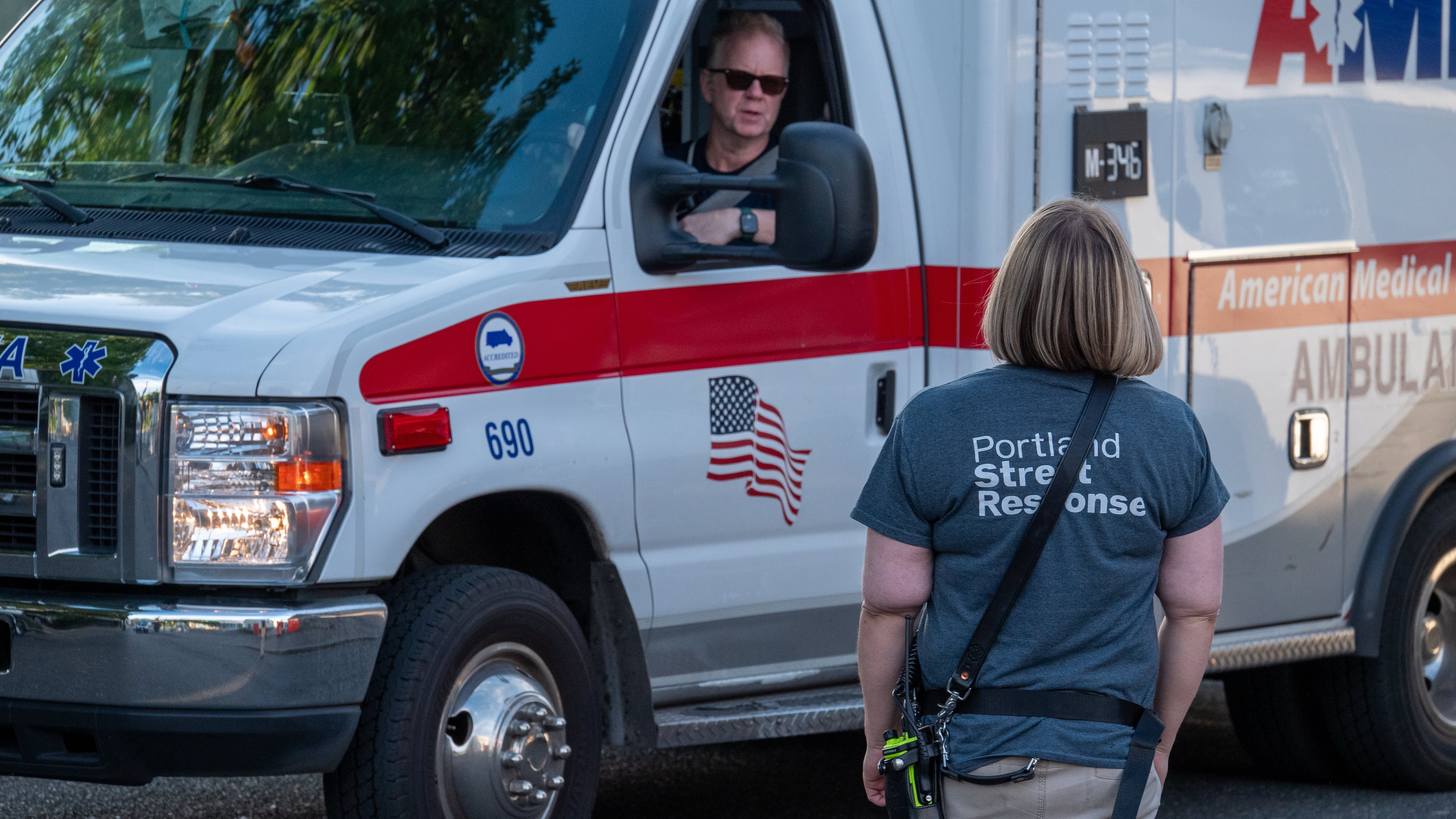Multnomah County says it has reached an agreement with American Medical Response, ending four months of mediation aimed at improving ambulance response times.
As part of the yearlong deal, the county agreed to allow advanced-care ambulances to be staffed by one paramedic and one less-trained emergency medical technician, a solution proposed by Commissioner Sharon Meieran 18 months ago to cope with a shortage of paramedics.
Few large cities require two paramedics in ambulances. AMR has been the sole ambulance provider in Multnomah County since 1995. Under that contract, AMR must respond to 90% of life-threatening calls within eight minutes in urban areas. AMR has not met that target since March 2022.
The new staffing plan, which must be approved by the Multnomah County Board of Commissioners, requires AMR to keep two paramedics on a minimum of 20 advanced life support ambulances. The company runs between 34 and 44 ALS ambulances in the county at any one time.
The pact requires AMR to deploy enough basic life support ambulances, staffed by two EMTs, as they have been under a recent pilot program, to respond to 85% of lower-acuity calls. BLS ambulances provide basic lifesaving care like CPR and defibrillation. ALS crews provide intravenous care, airway management, and advanced cardiac care.
Multnomah County won the right to report ambulance response times to the public on a monthly basis. AMR, meantime, won relief from $7,120,450 in county fines levied for late response times. All of those fines could be waived under two complex formulas described in the contract if AMR meets response times and exceeds some staffing requirements starting Nov. 1.
Meieran, an emergency room doctor, was irate that the mediation, led by County Chair Jessica Vega Pederson in closed-door sessions, took so long.
“It’s about damn time we restored a sense of urgency to this county,” Meieran said in a statement. “More importantly, it’s really good that 911 will once again be a better choice than calling Uber if you need to get a loved one to the hospital quickly.”
The ambulance crisis began during the pandemic, when call volumes spiked because of COVID-19 and a surge in illegal drug use. AMR asked the county to change staffing requirements, but the request was denied, Meieran said today. Dr. Jon Jui, medical director for Multnomah County Emergency Medical Services, said it was unsafe to staff ambulances with fewer than two paramedics, Meieran said.
“Make no mistake, accepting the staffing change in the agreement now is admitting it was safe and doable all along,” Meieran said. “The underlying logic, desperate need, and clear evidence haven’t changed here. [Chair Vega Pederson] signed this agreement, not to save lives, but to save more political embarrassment.”
Vega Pederson lauded the agreement.
“This agreement improves ambulance response times and holds AMR accountable for more ambulances to respond to 911 calls on time,” she said in a statement. “I have high expectations for AMR over the next 12 months, and I believe they can be successful.”
Austin DePaolo, a spokesman for Teamsters Local 223, which represents paramedics, said Vega Pederson was right to take the time to hammer out a workable plan.
“In the face of political pressure, Chair Vega Pederson and Multnomah County chose to get this right by rolling up their sleeves and getting to a responsible compromise,” DePaolo said in a statement. “For us this issue has always been about prioritizing the safety and well-being of our residents by preserving the expertise and experience of our paramedics, and we think this agreement does both.”
Commissioner Julia Brim-Edwards, a critic of Vega Pederson’s disclosure practices, complained that the board got copies of the agreement and response data this morning, not enough time to evaluate it before getting to ask questions of county staff at the board’s meeting today.
“The data that has been requested for weeks came across 20 minutes before the county sent out its press release,” Brim-Edwards said.
The commissioner also questioned why the county didn’t adopt Meieran’s model sooner.
“There were many representations about why this couldn’t be done,” Brim-Edwards said.
